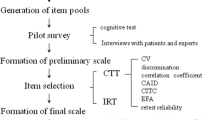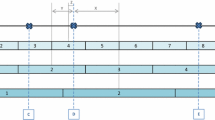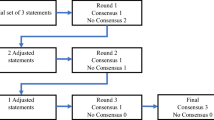Abstract
Purpose
To assess the performance of the EQ-5D-5L version compared with the standard EQ-5D-3L in a clinical setting targeted at patients with chronic hepatic diseases (CHDs).
Methods
We introduced the 5L descriptive system into a cost-of-illness study involving patients with different CHDs. The patients completed a questionnaire including the two versions of the EQ-5D, together with other questions related to their condition. We tested the feasibility, the level of inconsistency, the redistribution properties among consistent responses, the ceiling effect, the discriminative power, and the convergent validity of the 5L compared with the 3L system.
Results
A total of 1,088 valid patients were recruited: 62 % male, 19–89 (median = 59) years old. Patients had chronic hepatitis from HCV (31.8 %) or HBV infections (29.3 %) or other causes (7.8 %), 20.4 % had cirrhosis, 11.9 % underwent liver transplantation, and 7.8 % had hepatic carcinoma. Less than 1 % of EQ-5D-5L were returned blank, and 1.6 % or less of missing values were calculated on the dimensions of the partially completed questionnaires. The proportion and weight of inconsistent responses (i.e., 3L responses that were at least two levels away from the 5L responses) was 2.9 % and 1.2 on average, respectively. Regarding redistribution, 57–65 % of the patients answering level 2 with the 3L version redistributed their responses to levels 2 or 4 with the 5L version. A relative 7 % reduction of the ceiling effect was found. Furthermore, the absolute informativity increased but the relative informativity slightly decreased in every domain, and the convergent validity with the VAS improved.
Conclusions
In a clinical setting involving CHD patients, the EQ-5D-5L was shown to be feasible and with promising levels of performance. Our findings suggest that the 5L performs better in at least some of the properties analyzed, and encourage further research to also test other psychometric properties of this new version of the EQ-5D.


Similar content being viewed by others
References
Rabin, R., & de Charro, F. (2001). EQ-5D: A measure of health status from the EuroQol Group. Annals of Medicine, 33, 337–343.
Ong, S. C., Mak, B., Aung, M. O., Li, S. C., & Lim, S. G. (2008). Health-related quality of life in chronic hepatitis B patients. Hepatology, 47(4), 1108–1117.
McLernon, D. J., Dillon, J., & Donnan, P. T. (2008). Health-state utilities in liver disease: A systematic review. Medical Decision Making, 28(4), 582–592.
Russel, R. T., Feurer, I. D., Wisawatapnimit, P., & Pinson, C. W. (2009). The validity of the EQ-5D US preference weights in liver transplant candidates and recipients. Liver Transplantation, 15(1), 88–95.
Bjornsson, E., Verbaan, H., Oksanen, A., Fryden, A., Johansson, J., Friberg, S., et al. (2009). Health-related quality of life in patients with different stages of liver disease induced by hepatitis C. Scandinavian Journal of Gastroenterology, 44(7), 878–887.
Pickard, A. S., De Leon, M. C., Kohlmann, T., Cella, D., & Rosenbloom, S. (2007). Psychometric comparison of the standard EQ-5D to a 5 level version in cancer patients. Medical Care, 45(3), 259–263.
Pickard, A. S., Kohlmann, T., Janssen, M. F., Bonsel, G., Rosenbloom, S., & Cella, D. (2007). Evaluating equivalency between response systems. Application of the Rasch model to a 3-level and 5-level EQ-5D. Medical Care, 45(9), 812–819.
Janssen, M. F., Birnie, E., Haagsma, J. A., & Bonsel, G. J. (2008). Comparing the standard EQ-5D three-level system with a five-level version. Value in Health, 11(2), 275–284.
Janssen, M. F., Birnie, E., & Bonsel, G. J. (2008). Quantification of the level descriptors for the standard EQ-5D three-level system and five-level version according to two methods. Quality of Life Research, 15, 463–473.
Herdman, M., Gudex, C., Lloyd, A., Janssen, M., Kind, P., Parkin, D., et al. (2011). Development and preliminary testing of the new five-level version of EQ-5D (EQ-5D-5L). Quality of Life Research, 20(10), 1727–1736.
Kim, S. H., Kim, H. J., Lee, S. I., Jo, M. W. (2011). Comparing the psychometric properties of the EQ-5D-3L and EQ-5D-5L in cancer patients in Korea. Quality of Life Research published online 23 September 2011.
Ciampichini, R., Scalone, L., Gardini, I., Gaeta, L., Del Prete, A., Fusco, F., et al. (2011). Comparison of health-related quality of life between hepatitis, cirrhosis, liver transplantation and hepatic carcinoma: results of the COME study. Value in Health, 14(PGI30), 174.
Fusco, F., Scalone, L., Ciampichini, R., Fagioli, S., Gardini, I., Gaeta, L., et al. (2011). Comparison of treatment and indirect costs between hepatitis, cirrhosis, liver transplantation and hepatic carcinoma: Results of the COME study. Value In Health, 14(PGI16), 171.
World Medical Association (WMA) Declaration of Helsinki. Adopted by the 18th World Medical Assembly, Helsinki, Finland, June 1964, amended by the 29th World Medical Assembly, Tokyo, Japan, October 1975, the 35th World Medical Assembly, Venice, Italy, October 1983, and the 41st World Medical Assembly, Hong Kong, September 1989.
Herdman, M., Fox-Rushby, J., Rabin, R., Badia, X., & Selai, C. (2003). Producing other language versions of the EQ-5D. In R. Brooks, R. Rabin, & F. de Charro (Eds.), The measurement and valuation of health status using EQ-5D: A European perspective. Dordrecht: Kluwer Academic Publishers.
Badia, X., Montserrat, R., Herdman, M., & Kind, P. (2001). A comparison of United Kingdom and Spanish general population time trade-off values for EQ-5D health states. Medical Decision Making, 21, 7–16.
van Hout, B., Janssen, M. F., Feng, Y., Kohlmann, T., Busschbach, J., Golicki, D., et al. (2012). Interim scoring for the EQ-5D-5L: Mapping the EQ-5D-5L to EQ-5D-3L value sets. Value Health, 15(5), 708–715.
Bas Janssen, M. F., Birnie, E., & Bonsel, G. J. (2007). Evaluating the discriminatory power of EQ-5D, HUI2 and HUI3 in a US general population survey using Shannon’s indices. Quality of Life Research, 16(5), 895–904.
Polinder, S., Haagsma, J. A., Bonsel, G., et al. (2010). The measurement of long-term health-related quality of life after injury: Comparison of EQ-5D and the health utilities index. Injury Prevention, 16(3), 147–153.
Shannon, C. E., & Weaver, W. (1949). The mathematical theory of communication. Urbana: University of Illinois Press.
Juniper, E. F., Guyatt, G. H., & Jaeshke, R. (1996). How to develop and validate a new health-related quality of life instrument. In B. Spilker (Ed.), Quality of life and pharmacoeconomics in clinical trials (pp. 49–56). Philadelphia, PA: Lippincott-Raven Publishers.
Unal, G., de Boer, J. B., Borsboom, G. J., Brouwer, J. T., Essink-Bot, M., & de Man, R. A. (2001). A psychometric comparison of health-related quality of life measures in chronic liver disease. Journal of Clinical Epidemiology, 54(6), 587–596.
van der Plas, S. M., Hansen, B. E., de Boer, J. B., Stijnen, T., Passchier, J., de Man, R. A., et al. (2003). Generic and disease-specific health-related quality of life in non-cirrhotic, cirrhotic and transplanted liver patients: a cross-sectional study. BMC Gastroenterology, 17(3), 33.
Casanovas Taltavull, T., Jané Cabré, L., Herdman, M., Casado Collado, A., Pubill, B. P., & Fabregat Prous, J. (2007). Validation of the Spanish version of the liver disease quality of life instrument among candidates for liver transplant. Transplantation Proceedings, 39(7), 2274–2277.
Casanovas, T., Jané, L., Herdman, M., Casado, A., Garcia, B., Prat, B., et al. (2010). Assessing outcomes in liver disease patients: Reliability and validity of the Spanish version of the Liver Disease Quality of Life Questionnaire (LDQOL 1.0). Value Health, 13, 455–462.
Acknowledgments
Thanks to Anna Baldan and Giulia Magini, who cooperated in drafting the questionnaire, and to Giovanna Gaffuri for her contribute during data collection. Funds were provided by EpaC Onlus Patients Associations and CHARTA Foundation
Author information
Authors and Affiliations
Corresponding author
Rights and permissions
About this article
Cite this article
Scalone, L., Ciampichini, R., Fagiuoli, S. et al. Comparing the performance of the standard EQ-5D 3L with the new version EQ-5D 5L in patients with chronic hepatic diseases. Qual Life Res 22, 1707–1716 (2013). https://doi.org/10.1007/s11136-012-0318-0
Accepted:
Published:
Issue Date:
DOI: https://doi.org/10.1007/s11136-012-0318-0




